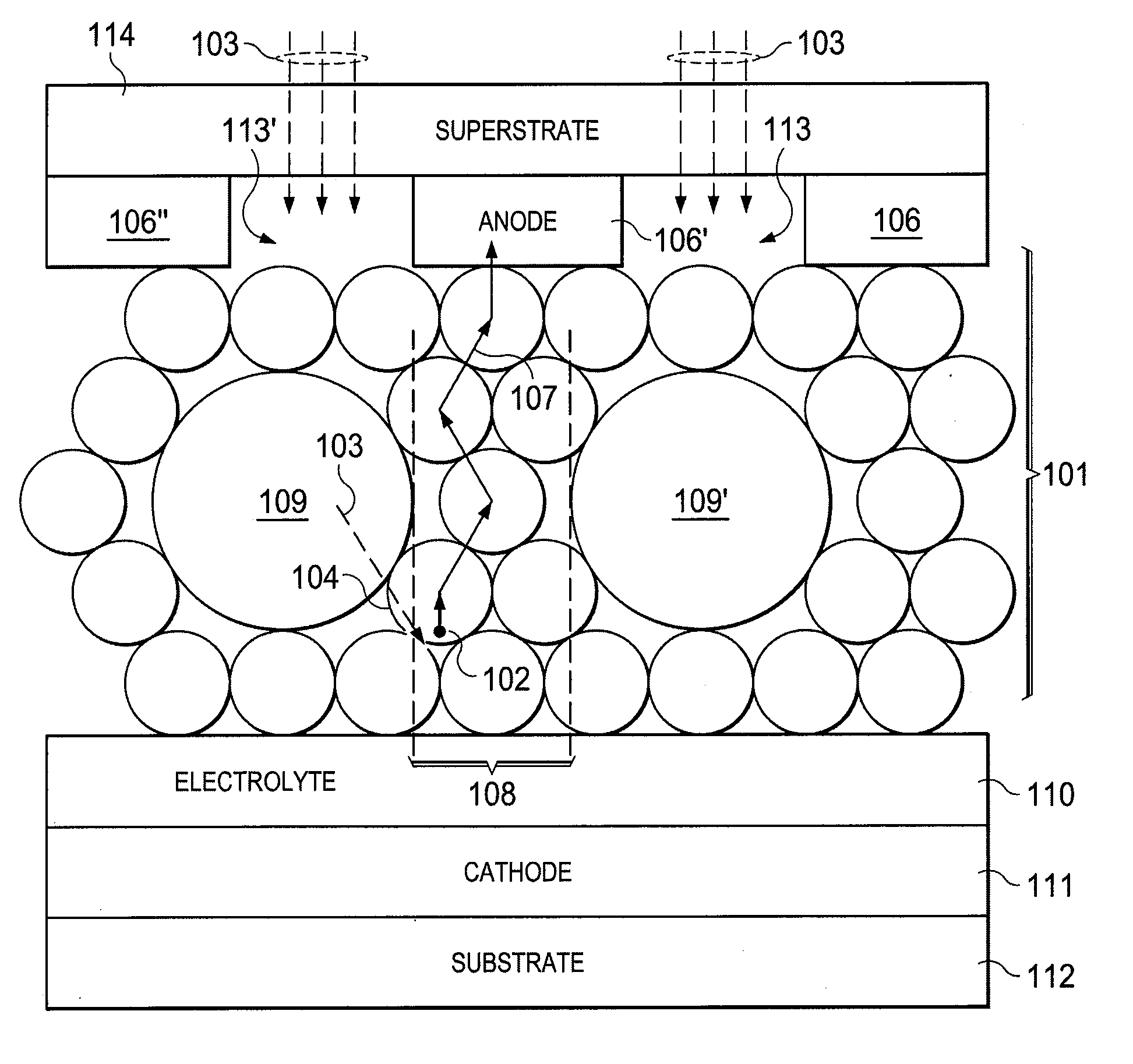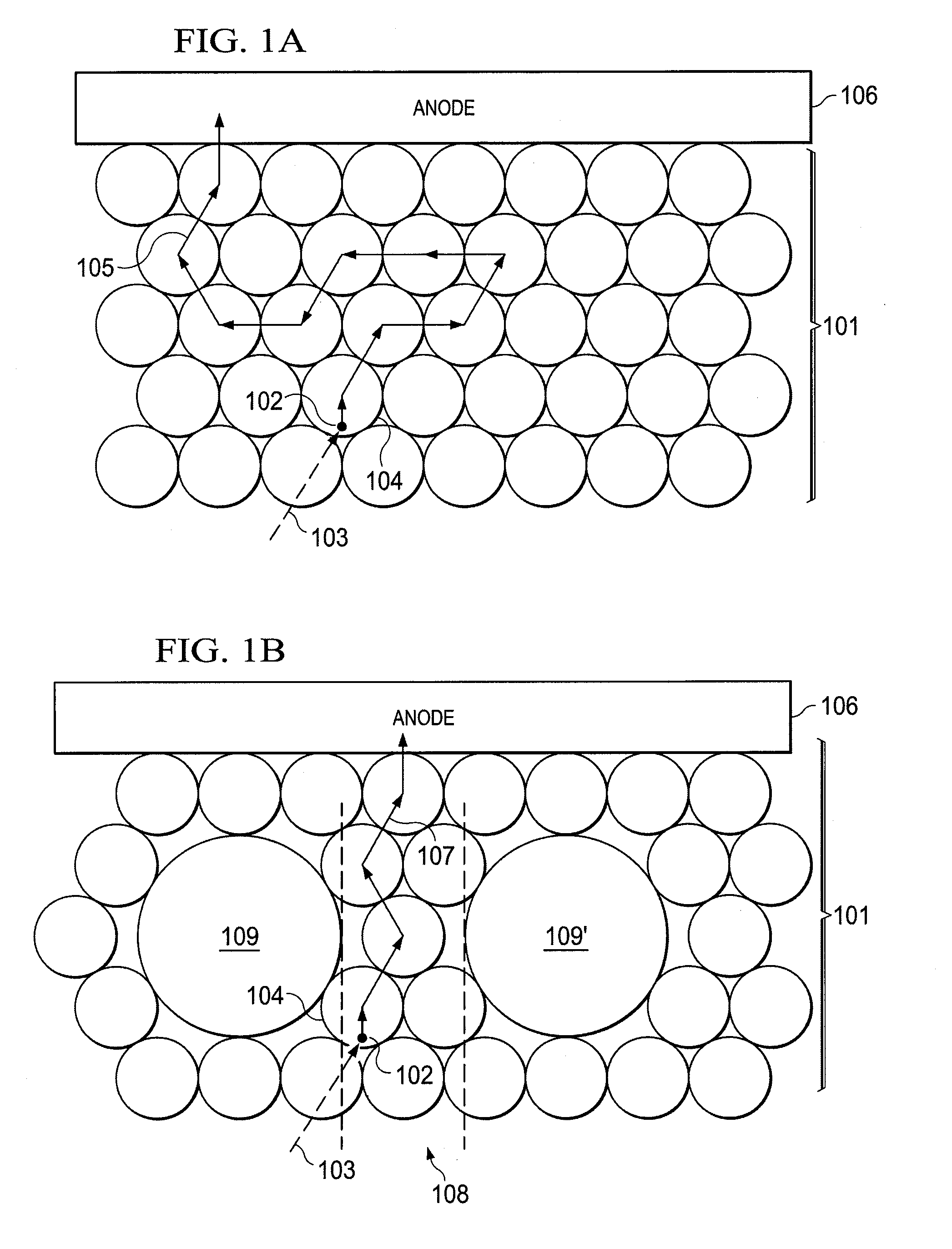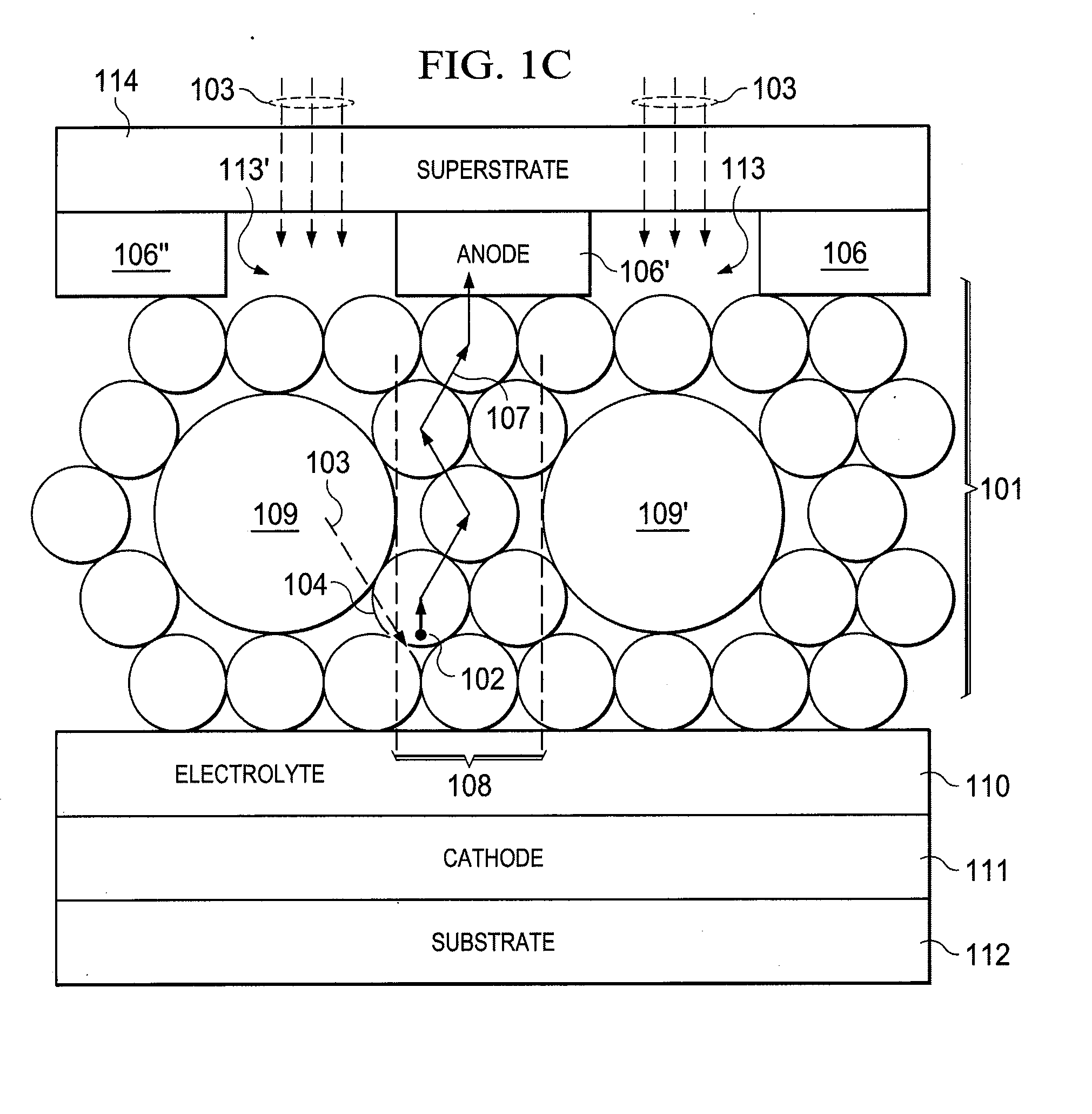Additives for solar cell semiconductors
a technology of additives and solar cells, applied in the direction of electrolytic capacitors, pv power plants, capacitors, etc., can solve the problems of reducing the efficiency of solar cells, and achieve the effects of improving conversion efficiency, enhancing electron mobility, and enhancing electron mobility
- Summary
- Abstract
- Description
- Claims
- Application Information
AI Technical Summary
Benefits of technology
Problems solved by technology
Method used
Image
Examples
example 1
Photovoltaic device with diatomaceous earth added to the semiconductor. Two dye-sensitized solar cells were assembled. First, a traditional dye-sensitized solar cell, i.e., a Gratzel cell, was constructed. The Gratzel cell was made by first constructing a top portion by depositing fluorine-doped tin dioxide (SnO2F) on a transparent plate. A thin layer of titanium dioxide (TiO2) was deposited on the transparent plate having a conductive coating. The TiO2 coated plate was then dipped into a photosensitized dye, ruthenium-polypyridine dye, in solution. A thin layer of the dye bonded to the surface of the titanium dioxide. A bottom portion of the Gratzel cell was made from a conductive plate coated with platinum metal. The top portion and the bottom portion were then joined and sealed. The electrolyte, an iodide-triiodide redox couple, was then inserted between the top and bottom portions of the Gratzel cell.
Second, an experimental dye-sensitized solar cell was constructed in the same m...
example 2
DSSC with fumed silica added to the semiconductor. An experimental dye-sensitized solar cell was constructed in the same manner as the solar cell represented by FIG. 5, except that 8% by weight fumed silica was added to the titanium dioxide slurry. The current-voltage character of the experimental cell is presented in FIG. 7. As shown in FIG. 5, the efficiency of the cell without an additive is 3.74%. As shown in FIG. 7, the efficiency of the cell with fumed silica added to the semiconductor is 4.21%. Thus, adding fumed silica to the titanium dioxide particles of the semiconductor resulted in a 12.5% increase in efficiency.
example 3
DSSC with gamma aluminum oxide added to the semiconductor. An experimental dye-sensitized solar cell was constructed in the same manner as the solar cell represented by FIG. 5, except that 8% by weight gamma aluminum oxide was added to the titanium dioxide slurry. Gamma aluminum oxide is an insulator, and due to its high conduction band edge, cannot efficiently absorb photo-induced electrons generated by the dye. However, added at the optimal level, the gains in light adsorption attributable to higher surface area outweigh impedance attributable to the presence of dispersed insulating particles. The current-voltage character of the experimental cell is presented in FIG. 8. As shown in FIG. 5, the efficiency of the cell without an additive is 3.74%. As shown in FIG. 8, the efficiency of the cell with gamma aluminum oxide added to the semiconductor is 4.45%. Thus, adding gamma aluminum oxide to the titanium dioxide particles of the semiconductor results in a 19% increase in efficiency...
PUM
| Property | Measurement | Unit |
|---|---|---|
| temperatures | aaaaa | aaaaa |
| temperatures | aaaaa | aaaaa |
| length | aaaaa | aaaaa |
Abstract
Description
Claims
Application Information
 Login to View More
Login to View More - R&D
- Intellectual Property
- Life Sciences
- Materials
- Tech Scout
- Unparalleled Data Quality
- Higher Quality Content
- 60% Fewer Hallucinations
Browse by: Latest US Patents, China's latest patents, Technical Efficacy Thesaurus, Application Domain, Technology Topic, Popular Technical Reports.
© 2025 PatSnap. All rights reserved.Legal|Privacy policy|Modern Slavery Act Transparency Statement|Sitemap|About US| Contact US: help@patsnap.com



